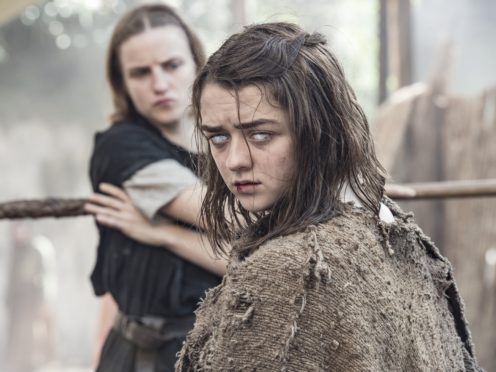Arya Stark is the Game Of Thrones character who has spent the most time committing acts of murder throughout the series, new research shows.
The youngest daughter of the Stark family, played by Maisie Williams, spends more time killing individuals (two minutes and 25 seconds) and mass murdering (one minute) than any other character in the first seven series of the hit show, according to analysis by the Press Association.
However, it is Jon Snow (Kit Harington) who spends the most screen time (13 minutes and nine seconds) committing acts of violence, including 15 seconds murdering, seven minutes and 41 seconds involved in duels, and four minutes 52 seconds involved in battles or brawls.

He is followed by Brienne of Tarth (Gwendoline Christie), who spends 10 minutes and nine seconds over the seven series involved in acts of violence, including six minutes and 50 seconds duelling, and three minutes seven seconds in battles or brawls.
The show has often come under fire for its levels of both violence and nudity and research shows there has been a significant swing in the proportions of both as the show has gone on.
In the first episodes the amount of on-screen nudity far outweighed the time spent showing scenes of violence – two minutes and 46 seconds against 36 seconds in the first episode of series one – but by the third series the balance largely shifted – 32 minutes and 35 seconds against 30 minutes and 15 seconds in the third episode.
This created a cumulative total of one hour, 16 minutes and 31 seconds of nudity throughout the seven series and three hours, nine minutes and 35 seconds of violence.

Research also shows that male nudity, including toplessness, showing a bottom and full frontal nudity, outweighs female nudity in the series so far, with men in a state of undress for a cumulative total of 45 minutes and 56 seconds and women unclothed for a total of 30 minutes and 35 seconds.
Theon Greyjoy (Alfie Allen) spent the most time in a state of undress (seven minutes and 34 seconds) out of all the characters in the show.

However, the majority of this time is down to his castration and torture at the hands of Ramsay Bolton (Iwan Rheon) and indicates that most male nudity is connected to the field of battle or some state of distress.
Melisandre (Carice van Houten) was the female star to take her clothes off the most (three minutes and 49 seconds) and in general female nudity is more likely to be sexualised throughout the course of the show.

Women are also more likely to do full frontal nudity, with a cumulative total of three minutes and 51 seconds, compared with just 36 seconds of full frontal male nudity.
Figures also show that Tyrion Lannister (Peter Dinklage) is the character most likely to be seen drinking or pouring a drink across the seven series.

He drank almost three times more than his wine-loving sister Cersei (Lena Headey), downing 100 drinks to her 35.
Research also shows a dramatic increase in the appearance of dragons in the later series of the show.
There were just fleeting glimpses of them in the first two series – one roar in series one and two blasts of fire in series two – but by the third series they were flying and by the fifth they were being ridden.

By the seventh series they were seen flying 51 times, roaring 42 times and breathing fire 30 times, with 30 instances where they were being ridden.
There was also a huge surge in the presence of wights and whitewalkers in the seventh series compared with earlier series.

While the first saw just 39 seconds of the terrifying creatures, and the second saw only one minutes and 52 seconds, they were on screen for 24 minutes and 31 seconds in the seventh series.
All 67 episodes of Game Of Thrones were divided between 15 researchers, with each episode being watched by two separate people.
The results were then compiled, and some episodes were rewatched by lead researchers to clarify any mistakes or discrepancies.
The final series of Game Of Thrones begins on Sky Atlantic and NOW TV at 2am on Monday and is repeated at 9pm.
